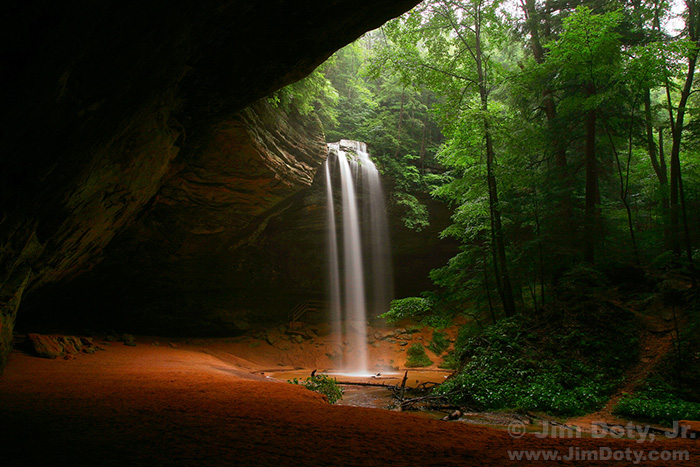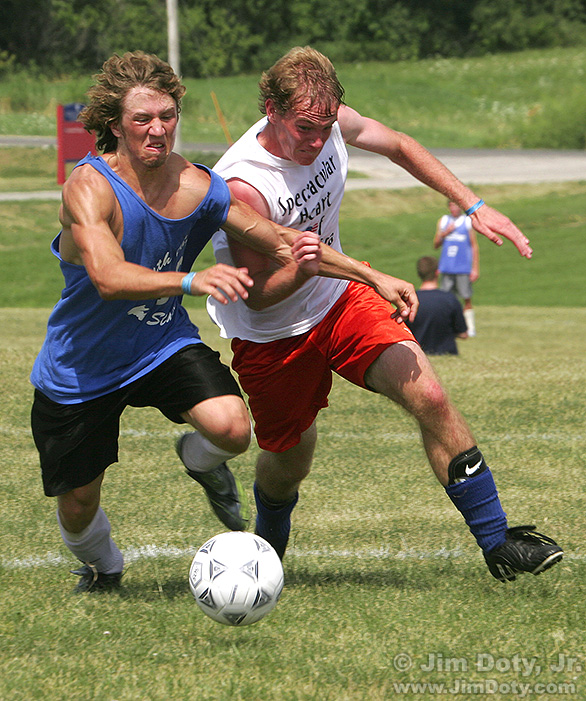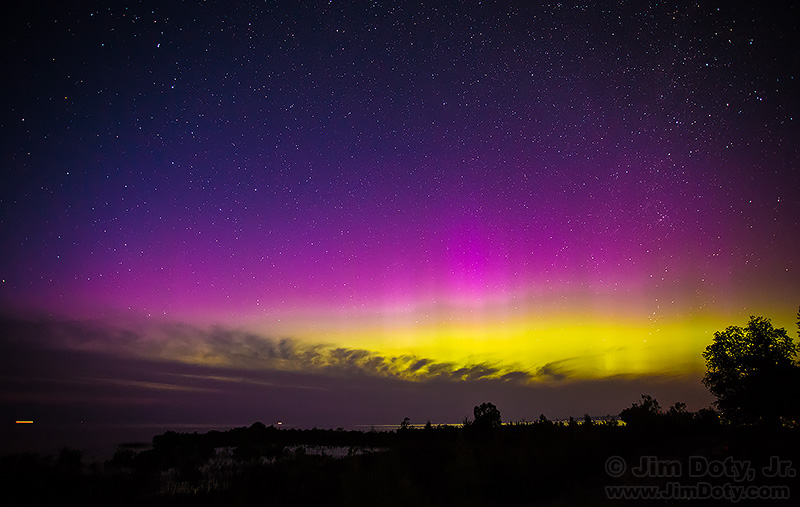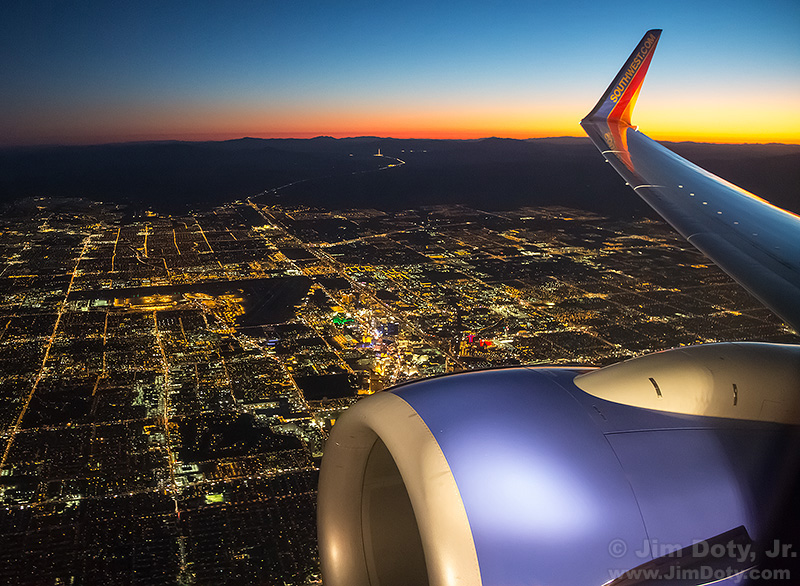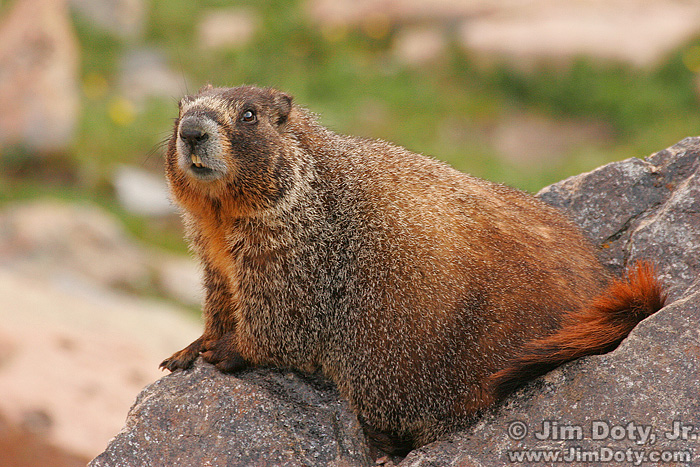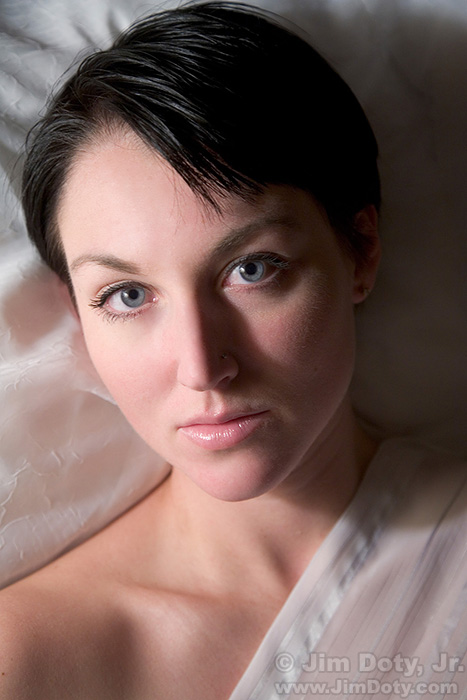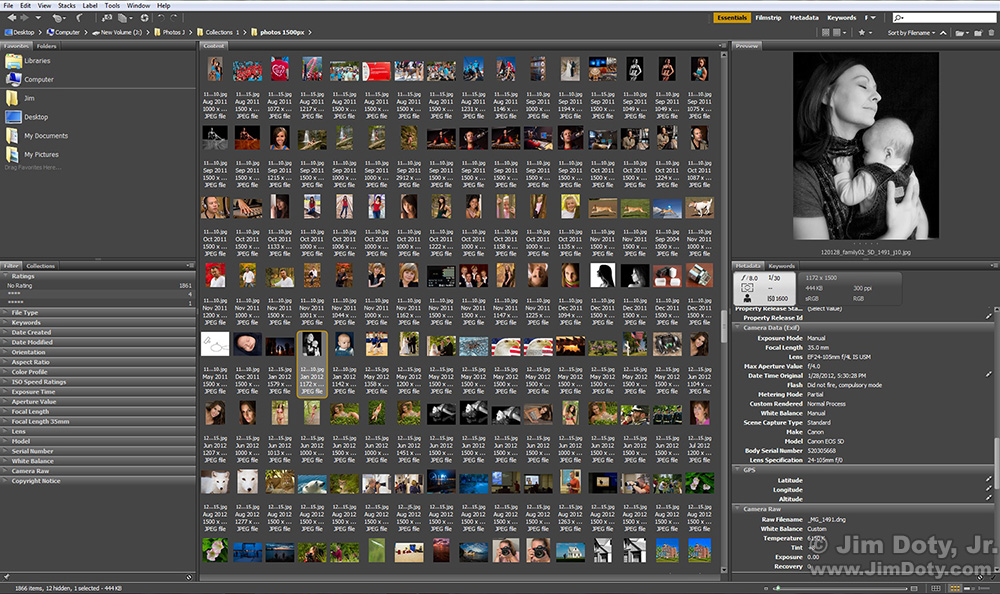
Folder opened with Adobe Bridge. You are looking at 128 images out of over 1800 images in the folder. Click to see a larger version.
I was asked recently if I have a favorite focal length, lens, or aperture setting (see Preferences Part One). And I have also been asked if I have favorite shutter speeds and ISO Settings. So I decided to open a folder with over 1800 of my images (a little of everything) and take a look at my shooting preferences from a statistical point of view. I chose a folder that has a wide variety of subject matter and a high number of images. I used Adobe Bridge for the way it gathers metadata statistics (see the prior article).
When it comes to the three basic exposure settings, I almost always choose the aperture first. That is driven by depth of field issues. I usually ask myself “Does the depth of field in this scene matter? If it does, in what way?” The answer to those questions determines my aperture choice and then I move on to the shutter speed and ISO decisions.
SHUTTER SPEEDS
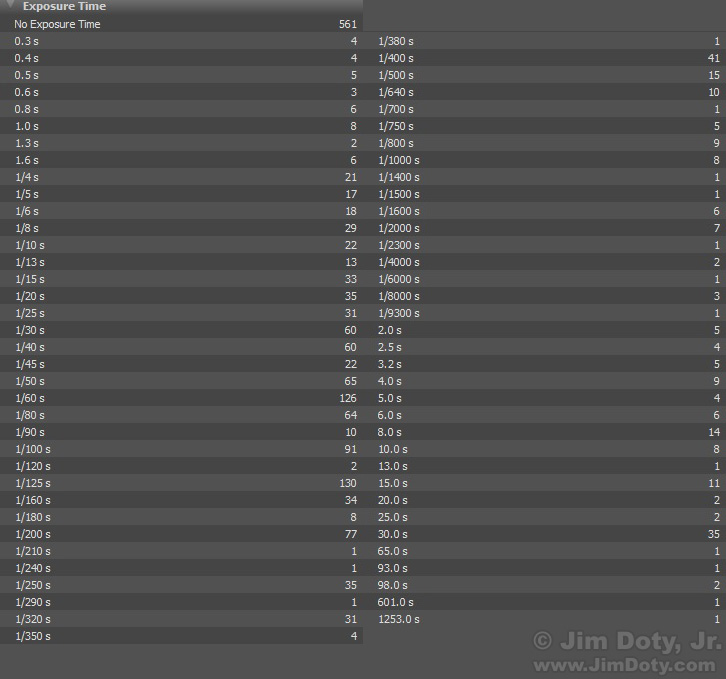
The Exposure Time panel in Adobe Bridge with the number of photos taken at each shutter speed. Click to see a larger version.
The Exposure Time panel in Adobe Bridge shows the number of photos in the open folder that were taken at each shutter speed (561 files have no shutter speed because they taken with older digital cameras that didn’t record that information in the metadata or they are scans of slide film images.) Adobe Bridge lists the shutter speeds in an unusual order beginning with shutter speeds faster than one second in the order of increasingly faster shutter speeds and followed by shutter speeds longer than one second in order of increasingly longer shutter speeds.
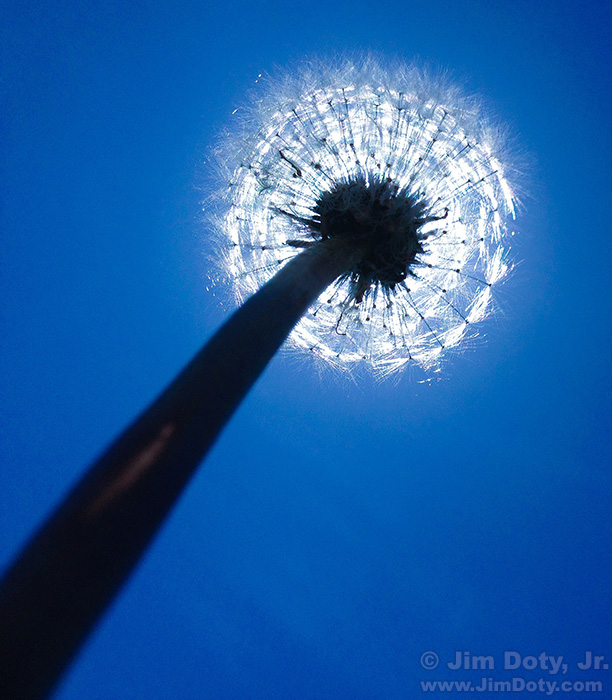
Dandelion Puffball. The bright sun forced my iPhone to record this image at a shutter speed of 1/9300 second. ISO 50.
The range of shutter speeds for the photos in this folder range from 1/9300 second at the fastest end to 1,253 seconds on the longest end. That is a pretty wide range of shutter speeds.
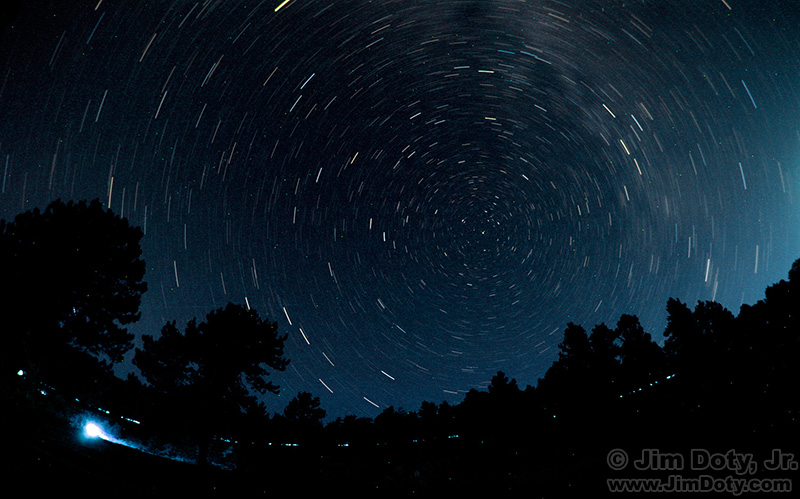
Star Trails, Moraine Park, Rocky Mountain National Park, Colorado. Exposure time of 1253 seconds (20 minutes, 53 seconds). ISO 100.
There are a few shutter speeds that jump out as being used more frequently, like 30 seconds. Let’s look at the photo taken with that shutter speed.
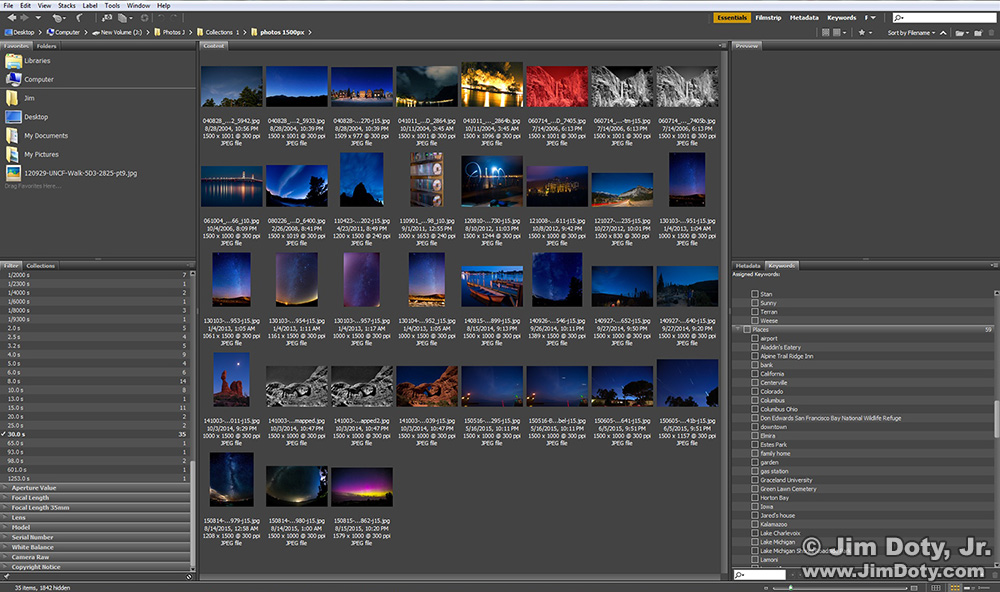
The Exposure Time panel in Adobe Bridge with the photos taken at 30 seconds selected. Click to see a much larger version.
When you are using any of the information panels in the lower left corner of Adobe Bridge, you can click on an individual shutter speed (or aperture, ISO settings, focal length, lens, camera of any other settings) and see all the photos that were taken at that shutter speed. In the panel at the lower left you can see the check mark by 30 seconds. Out of over 1800 images in the folder, Bridge is showing only the photos taken with a 30 second shutter speed.
FYI: If you want to, you can filter the list down even further (hence the word “Filter” at the top of the lower left section in Bridge) by choosing another panel, like aperture for instance, and choose an aperture of f/4. Bridge when then show you only the photos taken at 30 seconds AND an aperture of f/4.
As you can see, these 30 second photos were mostly taken at night. 30 seconds happens to be my favorite shutter speed for night time photography when I am using a super wide angle lens. 30 seconds is also my preferred shutter speed when doing day time photography (full sunlight) with an infrared filter on my lens.
I have some other preferred shutter speeds. I use shutter speeds longer than 1 second to create “angel hair” waterfalls. I use shutter speeds that are /1000 second or faster to “freeze” the motion of individual water droplets in fountains and crashing waves, something the human eye isn’t fast enough to see. To make moving water look like it does to the human eye I use shutter speeds around 1/60 to 1/125 second.
I have a variety of shutter speeds I use in different ways for sports and other activities. Some are designed to freeze the subject and some to create a little or a lot of blur.
Although shutter speeds are usually my second exposure consideration, in some important situations they become very important and I do have several favorites.
ISO SETTINGS
When it comes to exposure decisions, ISO settings usually come in third place. I do have a definite favorite: ISO 100. It gives the cleanest, highest quality images. In a perfect world I would use ISO 100 all the time. But I can’t.
In low light situations with a subject that doesn’t move (and a good, stable tripod), you can set the ISO to 100 and use any shutter speed you want, no matter how long. But in low light with a moving subject that you want to keep from blurring, you have to up the ISO to get a usable shutter speed.
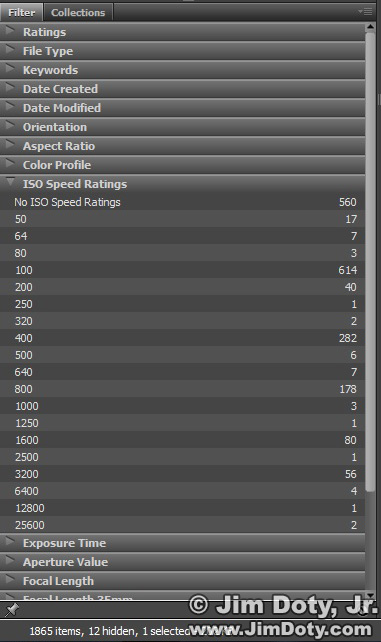
The ISO Speed Ratings panel in Adobe Bridge. The number of photos taken at each ISO speed are indicated.
The ISO Speed Ratings Panel makes my favorite of ISO 100 very clear. What about the others? My decision making process is pretty straight forward. I use the lowest ISO speed I can get away with to have the shutter speed I need. Why? Because the higher the ISO setting the more digital noise you will have in your digital image.
The really high ISO settings were used mostly for night photography when I needed to record a lot of information while stopping the motion of the stars, or the motion of an airplane.
Indoors or outside, with a moving subject I pick an ISO setting just high enough to give me the shutter speed I need. With a tripod mounted 400mm lens, I needed an ISO of 800 to give me a shutter speed of 1/40 second. Had this marmot been more active, I would have needed a higher ISO speed to get a faster shutter speed. The portrait below was taken with the light of a single light bulb diffused with a lampshade. An ISO of 800 gave me a barely hand holdable shutter speed of 1/20 second. (An image stabilized lens helped.)
The bottom line? Use the lowest ISO speed you can get away with. That means of course, you will make some image quality sacrifices in low light situations with moving subjects. But there are times when a noisy image is better than a blurred image.
Link

